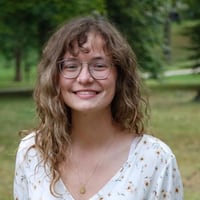Patricia Smith Griffin, who Higgins’ great-granddaughter, her fellow researcher Sherri Goudy, YWCA CEO and President Shannon Isom and Commissioner Shenise Turner-Sloss all spoke to recognize Higgins’ contributions to women and Black people, as well as Griffin’s work to uncover this history.
Griffin has spent about eight years researching her family’s trailblazing history alongside Goudy, uncovering information on 12 generations. The marker from the Pomeroy Foundation to be placed on the National Votes for Women Trail is a culmination of two years of this work. Griffin started the Charity’s Children Project to encourage others to follow her example and become “community archivists” who document their family’s history and how that fits into the community’s history as a whole.
The Charity’s Children Project is an archival trust of Griffin’s family and their communications with prominent figures like W.E.B. Dubois and Paul Laurence Dunbar. Next, Griffin will release the first season of a podcast titled “The Legacy of Charity’s Children.” She will continue to research her family’s impact and preserve the records for future generations.
“What I want to do is be sure that these things are preserved, digitized and transcribed so that they can become resources in African American History and perspectives. Telling history from the perspective in which you experienced it is pivotal,” Griffin said.
Higgins’ history starts even farther back, with her great grandmother Charity Broady. As the children in Griffin’s family learned early on, Broady was brought to Ohio in 1802. She was an early suffragette, part of the Underground Railroad and attended Sojourner Truth’s “Ain’t I a Woman” speech in 1851.
Broady passed her legacy on to Higgins, who became a trailblazer in her own time. Higgins boasts a long list of accomplishments in service to her community. She married Rev. Charles Higgins, who led the First Wesleyan Church that Broady had been part of founding.
Higgins, inspired by her great grandmother, joined the Dayton Women’s Suffrage Association. She started the Montgomery County Equal Suffrage Association after experiencing discrimination from the white association. She was one of the first, if not the first, Black Red Cross Nurses in Ohio. She raised six children and celebrated over 60 years of marriage, all while founding, leading and working with numerous organizations for her community.
“Jewelia Higgins continued to infiltrate spaces that were segregated, and she did so with a degree of confidence and certainty that was not typical of women of her era,” Griffin said.
Many of Higgins’ descendants were in the room, continuing traditions she used to pass on her legacy. The children recited a poem, as they would have done every Sunday in Higgins’ time. An ice cream social after the dedication was itself reminiscent of the Sunday socials Charles and Julia Higgins hosted.
“I am the CEO and President of the YWCA Dayton, but a servant, a bearer, a hope-holder of the work of my professional progenitor Jewelia Higgins,” said Shannon Isom.
Isom was one of many women present who, though not related, have followed in Higgins’ footsteps of activism and advocacy. Elizabeth Early, who is renovating the former WCA building to become Early Visions Purpose Center, was also recognized. Commissioner Shenise Turner-Sloss, the third Black woman elected as commissioner, also spoke of Higgins as an inspiration.
“It is the responsibility of each of us to know where we came from and where we are going,” Turner-Sloss said.
About the Author

